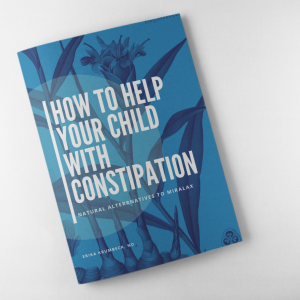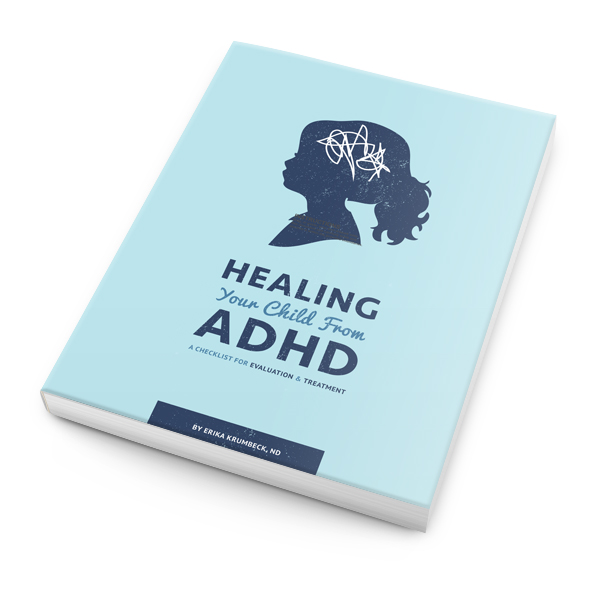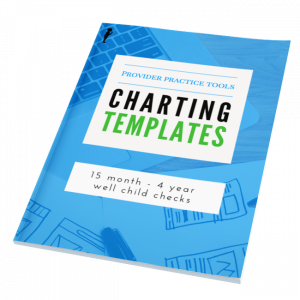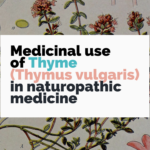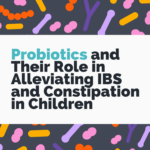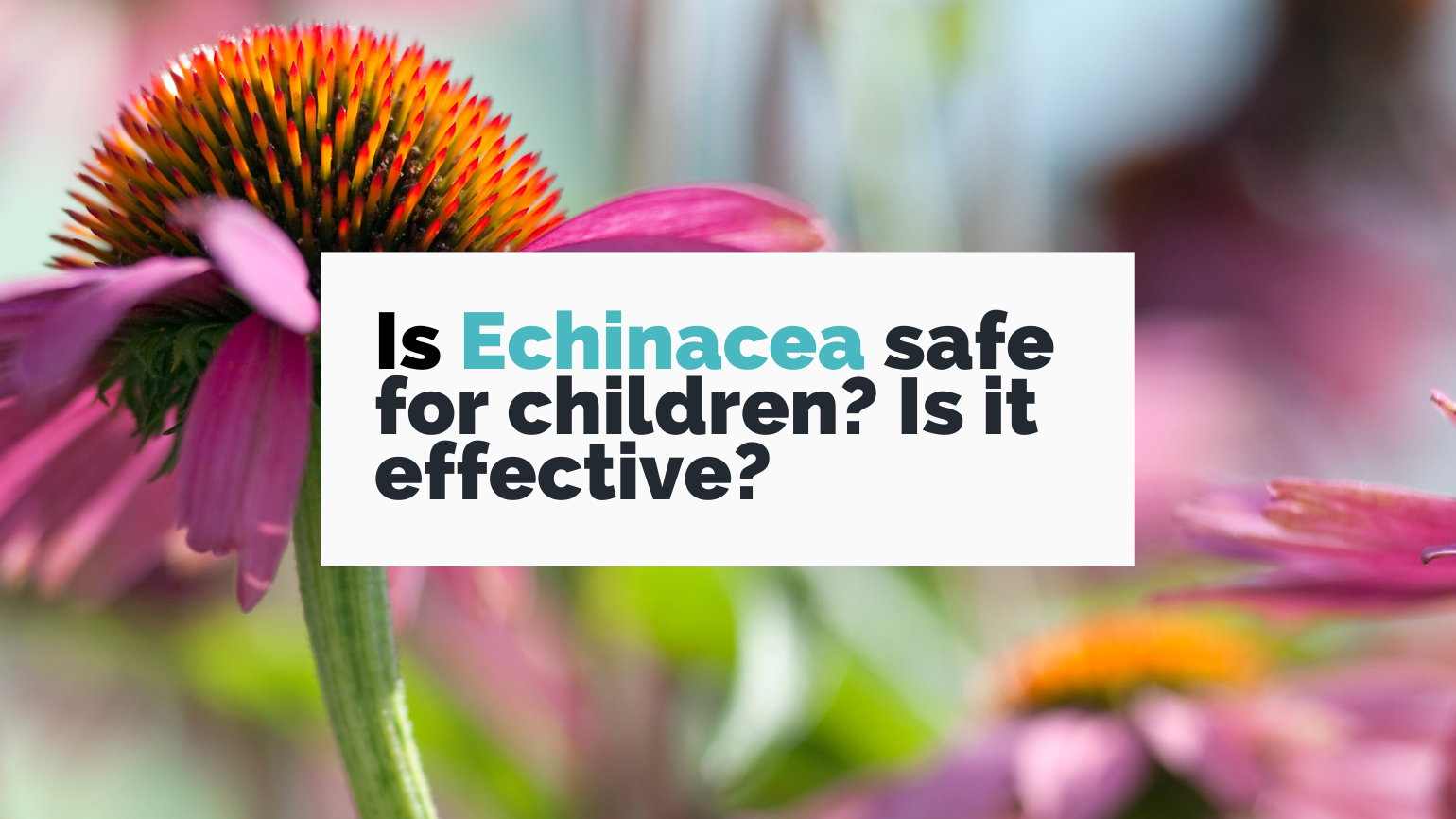
Is Echinacea Safe for Children? Is it Effective?
Introduction to Echinacea in herbal medicine
Have you ever strolled through the pharmacy section at your local grocery store and noticed cold and flu medications boasting echinacea as a key ingredient? While the flashy labels are clearly promising relief from stubborn bugs, you might be wondering: does echinacea work? Is it safe? What exactly is echinacea?
Echinacea is an herbal gem with roots stretching back through time. In this article we will unpack some of the potent history of this plant ally as well as take a peek into the latest scientific discoveries from the past decade (ish). We’ll dig deep into the nitty-gritty clinical research, especially focusing on how this botanical wonder plays a role in pediatric medicine. Read on to learn how echinacea bridges old traditions with modern insights in pediatric health.
Traditional uses
The roots of Echinacea’s traditional use are deeply embedded in Native American healing practices. Within these traditions, the root and flower of the plant were essential components in treating snake bites and soothing sore throats through boiled root water. The mashed plant served as a topical application for wounds and infections. The root infusion was even considered a remedy for gonorrhea. 23
Bear-with-White-Paw, a revered Lakota healer, recognized Echinacea’s medicinal prowess, making it a principal part of his healing repertoire. He effectively used it for various ailments including tonsillitis, bowel pain, and toothaches. 24
This indigenous wisdo was later appropriated by white settlers and then by the Eclectics, prominent practitioners in the late 19th and early 20th centuries in the United States. By 1921, echinacea, particularly the root of E. angustifolia, was the go-to treatment for Eclectic physicians. This traditional knowledge, rooted in tribal wisdom and clinical experience, is well-documented in sources like Kings’ American Dispensatory and Ellingwood.2
Phytochemistry
There are three main types of Echinacea – Echinacea angustifolia, Echinacea pallida, and Echinacea purpurea (also known as “purple coneflower”). E. angustifolia was the preferred species historically.25 Today,E. purpurea is the easiest to grow, most researched and the most commonly used.This discrepancy over the centuries poses an interesting query as to whether we are using the right species.
Generally speaking, echinacea as a species has numerous active constituents. These include phenolics like echinacoside and cichoric acid which help fight microbes and provide antioxidant support. Echinacea also includes alkylamides, a group of over 30 compounds that ease inflammation by tapping into our endocannabinoid system, fight fungi and slow down certain enzymes. Finally, echinacea also includes numerous polysaccharides and glycoproteins (like arabinogalactans), which are known for their immunomodulatory effects.3
But, did you know that different brands and products with echinacea are not all created equal? Each echinacea species has its own mix of powerful plant compounds. For example, Echinacea angustifolia is known for its relatively higher levels of alkylamides, particularly echinacoside and cynarin. E. angustifolia (not Echinacea purpurea) was traditionally used to support the immune system. Despite the fact that E. angustifolia has more use in traditional herbal medicine, E. purpurea is the species that is more heavily researched.
E. purpurea has significantly higher levels of polysaccharides, glycoproteins, and flavonoids. It does have alkylamides, but its alkylamide content is generally lower compared to E. angustifolia.
Echinacea pallida contains constituents similar to E. purpurea including polysaccharides, flavonoids, and alkylamides. Research on this species is extremely limited.
It is worth noting that the different parts of each plant contain significantly different constituents. For example, the leaves of E. purpurea do not contain alkylamides, but they do contain vitamin C, which is also needed for healthy immune system function.
E. angustifolia may be associated with higher rates of allergies than other types of echinacea. Even within the same species the chemicals can vary a lot from plant to plant (known as “chemoraces”). Furthermore, the amount and location of these active compounds change as the plant grows and with the season.3
Because manufacturers (even herbalists!) use different species of echinacea, different parts of the plant, different blends and different harvesting practices, medicinal constituents between products vary widely. This is one of the reasons why the research on echinacea efficacy can be so confusing!
| Purpurea | Angustifolia | Pallida | Paradoxa | |
| Flowerheads | Chlorogenic acids Alkylamides | Chlorogenic acids Alkylamides Echinacoside | Chlorogenic acids Alkylamides Echinacoside | Alkylamides Echinacoside |
| Stems | Alkylamides Cichoric acid | Alkylamides Cichoric Acid | Unknown | Unknown |
| Leaves | Cichoric acid Caftaric Acid Cynarin | Cichoric acid Caftaric acid Cynarin | Cichoric acid Alkylamides | Alkylamides Echinacoside |
| Roots | Alkylamides Cynarin | Echinacoside Cynarin | Echinacoside Alkylamides | Echinacoside Chlorogenic acids Alkylamides |
| Localization of bioactive compounds in E. purpurea, E. angustifolia, E. pallida, and E. paradoxa. Compounds in bold are in high concentrations, compounds in italics are found in trace amounts. 26 | ||||
Is echinacea safe for patients with autoimmune diseases?
Lately, there has been notable attention surrounding the immunomodulatory properties of Echinacea. Concerns have been raised regarding its safety for prolonged use, particularly in individuals with autoimmune diseases and asthma. Although there have been case studies linking immunostimulatory herbs like Echinacea to the onset or worsening of autoimmune conditions, extensive research hasn’t solidified these concerns.
Here’s where it gets interestingly complex (and maybe a bit nerdy): Echinacea’s influence on the immune system is still a bit of a puzzle to scientists. We know that certain components in echinacea like polysaccharides stimulate the immune system by enhancing T-cell activation, increasing tumor necrosis factor a, interleukin-1 and interferon B3 stimulation, and activating alternate complement pathway. However, traditional extracts of echinacea (ethanolic extracts), which are commonly used typically, contain only negligible amounts of polysaccharides. Therefore, conclusions about the appropriate use of such extracts should not be solely based on potentially misconstrued interpretations of polysaccharide research.
Existing evidence points towards echinacea predominantly stimulating phagocytosis, which shows that its influence is on nonspecific immune responses rather than specific ones. As always, there is a difference between in-vitro studies and theoretical research and those done in actual humans. In actuality, current evidence does not conclusively demonstrate any harm in using Echinacea for extended periods, nor does it strongly contraindicate Echincacea in conditions such as autoimmune disease and asthma. Research published in 2018 indicates that Echinacea constituents possess potential in allergy and inflammation treatment, showing inhibition of B-hexosaminidase release and histamine from stimulated mast cells. Additionally, they suppress calcium rise, indicating an impact on granule release signals and reducing TNF-a and PGE2 release.5
A 2015 literature review and assessment of the medicinal safety data of orally used echinacea preparations found it to be a well-tolerated herbal medicine. This review cited studies examining herb-drug interactions with Echinacea purpurea, which show no significant inhibitions of human CYP2D6 and CYP3A4 isoforms in vivo.6
When it comes to interacting with other medications, echinacea doesn’t seem to interfere significantly with our key enzymes (although liver microsome studies show mixed results). Furthermore, trial participants who used Echinacea have consistently reported minimal issues, sometimes not even directly tied to the treatment. For instance, in a 2007 study on kids with respiratory infections, there were no allergic reactions or adverse effects. Even long-term studies (up to 6 months) haven’t raised major concerns, suggesting Echinacea might be suitable for extended use. Interestingly, this review questioned the usual warnings about Echinacea for autoimmune issues or immunosuppression, highlighting research that suggests echinacea (especially those with alkamides) might tone down our immune response, and surprisingly might even help with autoimmune conditions.
Similar doubts popped up about steering clear of echinacea during pregnancy. While there were some signs in mice that echinacea might impact how blood vessels form in embryos, digging through the pile of studies did not show any higher risk of birth defects during early development. 6–8
With echinacea’s extensive traditional use over the centuries, the evidence contraindicating its use in autoimmunity, immunosuppression or pregnancy has not been substantiated.
Is echinacea safe in children? Is it safe in pregnancy or breastfeeding?
Echinacea is generally well tolerated in children, pregnancy and breastfeeding patients. However, allergic reactions can occur in patients who are sensitive to the Asteracea/Compositae family (also known as the daisy or sunflower family). Be aware that patients who have allergies to members of this family are more likely to get a rash or even possibly an anaphylactic reaction30 to echinacea. Patients with allergies or sensitivities to sunflower, lettuce, marigold, artichoke, dandelion, chicory, feverfew, chamomile, yarrow and burdock should be cautious. However, this is not an absolute contraindication to taking echinacea.
Pregnancy: Echinacea is considered category A by traditional herbalists, and according to Mills & Bone Essential Guide to Herbal Safety.20 One Norwegian study of 363 pregnant women who reported use of echinacea during pregnancy compared to a large population who did not (over 68,000) showed no increased risk of malformations or adverse pregnancy outcomes.22 Echinacea has long been used by midwives and herbalists in pregnancy, and no data has yet found evidence of harm. That said, again be aware of potential allergies as listed above, as anaphylaxis is significantly more dangerous in pregnancy.
Breastfeeding: Echinacea is considered compatible with lactation.20
Children: Echinacea has been widely studied in children and appears to be safe (see below), with the limitation that patients taking echinacea appear to have higher rates of skin rashes. Some children may not tolerate it due to potential for allergy. Otherwise echinacea glycerite mixes well in other herbal formulas and has a relatively palatable taste.
Upper Respiratory Tract Infections
The common cold, caused by over 200 viruses targeting the upper respiratory tract, remains a persistent global health concern. Rhinovirus is the big player here, causing about half of these sniffly episodes. Adults typically endure this annoyance around 2-4 times a year, while kids face a tougher time, battling an average of 6-10 cold annually. While adults possess a more robust immune defense, the symptoms – mild fever, irritability, runny nose, cough, and congestion – persist across age groups. Younger children may exhibit additional manifestations like a rash.
The annual cost of the common cold in the US alone ranges from $25-40 billion, causing 70-120 million lost workdays and prompting over 100 million physician visits annually.5 Given the economic and healthcare burden, exploring alternatives to cold interventions is crucial. Echinacea offers promise in mitigating healthcare costs and reducing side effects compared to conventional cold medications, especially in pediatric care, where safety profiles often limit options.9,10
Let’s take a look at some of the research that supports Echinacea’s use for cold care:
A study from 2006 in adults found that using Echinacea purpurea (E.purpurea) was significantly better than taking a placebo when it came to dodging a full-blown cold.11
A 2016 meta analysis showed that using a proprietary E.purpurea extract (Echinaforce®) could mean fewer cold episodes overall and fewer days feeling under the weather.9
For pediatric research a 2021 study focused on kids aged 4-12 found that E. purpurea tablets (Echinaforce® Junior) lowered the number of cold days by a solid 32.5%! Antibiotic use plummeted by a staggering 76.3%, and it even tamped down complications like the flu and other respiratory issues.12 Now that’s a win!
There’s even some talk about echinacea being a potential game-changer in dealing with COVID-19. Some theories suggest it might block the virus from getting into our cells and spread while also calming down major inflammatory responses (via interaction with CB2 and PPARy).13 This theory was tested in a trial in 2020: researchers tried a combo of Echinacea (they didn’t specify which kind – argh!) and ginger on people suspected of having COVID-19. The study found that those who took the herbal mix for one week had better relief from coughing, breathing issues and muscle pain compared to those on the standard treatment. 14
It is very important to note that most of the studies were completed with patients taking echinacea prophylactically, meaning they were taking echinacea over a long period of time and not just while coming down with a cold or illness. In fact, previous studies in children have found that echinacea is not effective when taken at the onset of symptoms.21 It is likely that by the time a patient’s symptoms have started it is much too late for the immunomodulatory benefits of echinacea to have any effect.
Inflammatory Conditions
Atopic Eczema
In the world of pediatric care, managing chronic conditions like atopic dermatitis (eczema) remains quite the challenge. Unfortunately many families struggle to find treatment that is actually effective for their children.
In a study from 2017, researchers ventured into the world of E. purpurea-derived alkylamides, honing in on the fascinating realm of cannabinoid (CB)-2 receptors. These receptors, like little gatekeepers in our bodies, might hold the key to calming down the inflammation-causing chaos in skin cells. Clinical trials showed that an E. purpurea extract-based cream significantly reduced eczema symptoms compared to baseline and the comparator cream. It showed real promise, significantly dialing down the redness, dryness and itchiness compared to the standard cream they compared it to. They also discovered that the echinacea product boosted natural lipids, making the skin healthier overall. 27
In a different angle, there were some intriguing studies in 2018 with adults trying out creams and special shampoos loaded with E. purpurea extract. The studies showed that the creams significantly improved redness, dryness and itchiness by a whopping 93%. Another study showed that an oil-in-water emulsion reduced redness, dryness and itchiness of the scalp in 85% of the participants.16
Imagine what these could do for little ones dealing with itchy skin! It’s a promising new chapter in skincare, offering potential relief for kids struggling with this chronic condition.
Allergic Asthma
A 2015 study tested an extract of Echinacea purpurea in guinea pigs with allergic asthma (yep, guinea pigs are the unsung heroes here). Scientists in the study isolated a complex from the echinacea flowers, then tested it on the guinea pigs. The results showed that echinacea relaxed airways, eased muscle contractions, and fought inflammation just like the classic asthma drugs do!
The study suggests that Echinacea complex could be a valuable supplementary treatment for allergic airway disorders like asthma. Obviously this research would need to be replicated in humans.17
Ulcerative colitis
Ulcerative colitis is a chronic intestinal disease with inflammation and ulcers in the colon. Ulcerative colitis in children adds another layer of complexity. It’s a tough enough condition, disrupting daily life with symptoms like abdominal pain, diarrhea and weight loss. Treatments can be challenging in children as some interfere with growth and development. Finding the right balance between managing symptoms and ensuring a child’s growth and development isn’t an easy task.
As we’ve already discussed, echinacea is known for its immune boosting and anti-inflammatory powers, which might just be what’s needed to soothe an inflamed gut. In a 2014 study on rats, researchers studied the effects of Echinacea spp in colitis. Surprise, surprise – it seemed to help ease tissue damage and dial down those pesky oxidative stress markers. Then, in 2023, they went deeper into this idea, using E. purpurea extract on rats dealing with induced ulcerative colitis. After giving these rats the extract for about 10 days, the rats appeared to improve in their condition with less weight loss and diarrhea, better gut barrier health, and fewer inflammatory cytokines causing trouble. Plus, the extract disrupted the function of specific molecules in the complement and inflammatory pathways (specifically C3z/C3zR signal pathway), suggesting its potential in influencing these pathways to help manage ulcerative colitis. 28-29
Now, why care about these rat or guinea pig experiments? Well, preclinical studies like these give us a sneak peek into how certain treatments might work in real-life health problems. It’s like laying the groundwork – figuring out if something’s worth exploring further before diving into human trials. Animal research is a crucial step toward understanding how echinacea could become a promising player in managing chronic conditions even in pediatric cases.
Conclusion
Echinacea, a herbal remedy deeply rooted in Native American healing traditions, has a rich history that spans across centuries. Its diverse applications traditionally, from treating snake bites to relieving sore throats, underscore its versatility. However, the adoption of this ancestral wisdom by white settlers and the subsequent exclusive concentration of mainstream research on E. purpurea contributes to the erasure of its indigenous significance. This raises concerns regarding the preservation of indigenous origins and prompts reflection among herbalists, naturopathic and integrative providers who utilize echinacea to question if we are advocating for the most suitable species. By comparing historical texts with modern literature, it becomes apparent that E. angustifolia is most effective for addressing acute symptoms, while E. purpurea serves better as an immunomodulatory agent.
Again, the phytochemistry of echinacea reveals a complex composition with different species containing unique combinations of bioactive compounds. The variations in echinacea products, including the types of echinacea used, plant parts, and growing conditions, contribute to the challenge of establishing consistent research findings on its efficacy.
While there is ongoing debate about the safety of echinacea, especially in cases of autoimmune diseases and asthma the evidence remains inconclusive. Some studies suggest that echinacea may modulate the immune system without causing significant adverse effects. However, caution is advised, and individuals with specific health conditions are recommended to consult with healthcare professionals before incorporating echinacea into their regimen.
In the realm of respiratory tract infections, echinacea shows promise as a natural aid for managing the common cold. Research indicates potential benefits in reducing the frequency of cold episodes, alleviating symptoms, and even exploring its role in addressing COVID-19 symptoms. Additionally, in the context of inflammatory conditions like atopic eczema and ulcerative colitis, echinacea exhibits anti-inflammatory properties, providing a potential avenue for managing these chronic conditions, particularly in pediatric cases.
So, there you have it. Armed with this information, my hope is that the next time you find yourself perusing the pharmacy section in the grocery store, you’ll be better equipped to decide whether those products proudly featuring echinacea as a key ingredient are right for you. Although some products may not specify the type of echinacea used, you now know that E. purpurea is the one that has been studied the most – especially when seeking solutions for cold or flu relief.
References:
1. Naranjo LO. The Native American Herbalist’s Bible – 3-in-1 Companion to Herbal Medicine: Theory and Practice, Field Book, and Herbal Remedies.; 2021.
2. Hostettmann K. [History of a plant: the example of Echinacea]. Forsch Komplementarmed Klass Naturheilkd. 2003;10 Suppl 1:9-12. doi:10.1159/000071678
3. Parsons JL, Cameron SI, Harris CS, Smith ML. Echinacea biotechnology: advances, commercialization and future considerations. Pharm Biol. 2018;56(1):485-494. doi:10.1080/13880209.2018.1501583
4. Bone K. Echinacea: When Should it be Used? Alternative Medicine Review. 1997;2(6).
5. Gulledge TV, Collette NM, Mackey E, et al. Mast cell degranulation and calcium influx are inhibited by an Echinacea purpurea extract and the alkylamide dodeca-2E,4E-dienoic acid isobutylamide. J Ethnopharmacol. 2018;212:166-174. doi:10.1016/j.jep.2017.10.012
6. Ardjomand-Woelkart K, Bauer R. Review and Assessment of Medicinal Safety Data of Orally Used Echinacea Preparations. Planta Med. 2016;82(1-2):17-31. doi:10.1055/s-0035-1558096
7. Saunders PR, Smith F, Schusky RW. Echinacea purpurea L. in children: safety, tolerability, compliance, and clinical effectiveness in upper respiratory tract infections. Can J Physiol Pharmacol. 2007;85(11):1195-1199. doi:10.1139/Y07-103
8. Lee AN, Werth VP. Activation of Autoimmunity Following Use of Immunostimulatory Herbal Supplements. Archives of Dermatology. 2004;140(6):723-727. doi:10.1001/archderm.140.6.723
9. Ross SM. Echinacea purpurea: A Proprietary Extract of Echinacea purpurea Is Shown to be Safe and Effective in the Prevention of the Common Cold. Holist Nurs Pract. 2016;30(1):54-57. doi:10.1097/HNP.0000000000000130
10. Bramley TJ, Lerner D, Sames M. Productivity losses related to the common cold. J Occup Environ Med. 2002;44(9):822-829. doi:10.1097/00043764-200209000-00004
11. Schoop R, Klein P, Suter A, Johnston SL. Echinacea in the prevention of induced rhinovirus colds: A meta-analysis. Clinical Therapeutics. 2006;28(2):174-183. doi:10.1016/j.clinthera.2006.02.001
12. Ogal M, Johnston SL, Klein P, Schoop R. Echinacea reduces antibiotic usage in children through respiratory tract infection prevention: a randomized, blinded, controlled clinical trial. Eur J Med Res. 2021;26(1):33. doi:10.1186/s40001-021-00499-6
13. Nagoor Meeran MF, Javed H, Sharma C, et al. Can Echinacea be a potential candidate to target immunity, inflammation, and infection – The trinity of coronavirus disease 2019. Heliyon. 2021;7(2):e05990. doi:10.1016/j.heliyon.2021.e05990
14. Mesri M, Esmaeili Saber SS, Godazi M, et al. The effects of combination of Zingiber officinale and Echinacea on alleviation of clinical symptoms and hospitalization rate of suspected COVID-19 outpatients: a randomized controlled trial. J Complement Integr Med. 2021;18(4):775-781. doi:10.1515/jcim-2020-0283
15. Oláh A, Szabó-Papp J, Soeberdt M, et al. Echinacea purpurea-derived alkylamides exhibit potent anti-inflammatory effects and alleviate clinical symptoms of atopic eczema. J Dermatol Sci. 2017;88(1):67-77. doi:10.1016/j.jdermsci.2017.05.015
16. Kilic A, Harder A, Reich H, Knie U, Masur C, Abels C. Efficacy of hydrophilic or lipophilic emulsions containing Echinacea purpurea extract in treatment of different types of pruritus. Clinical, Cosmetic and Investigational Dermatology. 2018;11:591-602. doi:10.2147/CCID.S172518
17. Šutovská M, Capek P, Kazimierová I, et al. Echinacea complex–chemical view and anti-asthmatic profile. J Ethnopharmacol. 2015;175:163-171. doi:10.1016/j.jep.2015.09.007
18. Gu D, Wang H, Yan M, et al. Echinacea purpurea (L.) Moench extract suppresses inflammation by inhibition of C3a/C3aR signaling pathway in TNBS-induced ulcerative colitis rats. J Ethnopharmacol. 2023;307:116221. doi:10.1016/j.jep.2023.116221
19. Dogan Z, Ergul B, Sarikaya M, et al. The antioxidant effect of Echinacea angustifolia and Echinacea purpurea in rat colitis model induced by acetic acid. Bratisl Lek Listy. 2014;115(7):411-415. doi:10.4149/bll_2014_081
20. Mills, S, Bone, K. (2005). The Essential Guide to Herbal Safety. Elsevier.
21. Taylor JA, Weber W, Standish L, Quinn H, Goesling J, McGann M, Calabrese C. Efficacy and safety of echinacea in treating upper respiratory tract infections in children: a randomized controlled trial. JAMA. 2003 Dec 3;290(21):2824-30. doi: 10.1001/jama.290.21.2824. PMID: 14657066.
22. Heitmann K, Havnen GC, Holst L, Nordeng H. Pregnancy outcomes after prenatal exposure to echinacea: the Norwegian Mother and Child Cohort Study. Eur J Clin Pharmacol. 2016 May;72(5):623-30. doi: 10.1007/s00228-016-2021-5. Epub 2016 Feb 19. PMID: 26895223.
23. Hudson JB. Applications of the Phytomedicine Echinacea purpurea (Purple Coneflower) in Infectious Diseases. J Biomed Biotechnol. 2012;2012:769896. doi:10.1155/2012/769896
24. Osceola Naranjo L. The Native American Herbalist’s Bible.; 2021.
25. Echinacea Differences Matter: Traditional Uses of Echinacea angustifolia Root Extracts vs Modern Trials With Echinacea purpurea Fresh Plant Extracts – International Journal of Naturopathic Medicine. Published March 16, 2012. Accessed February 7, 2024. https://intjnm.com/echinacea-differences-matter-traditional-uses-of-echinacea-angustifolia-root-extracts-vs-modern-trials-with-echinacea-purpurea-fresh-plant-extracts/
26. Parsons JL, Cameron SI, Harris CS, Smith ML. Echinacea biotechnology: advances, commercialization and future considerations. Pharm Biol. 2018;56(1):485-494. doi:10.1080/13880209.2018.1501583
27. Echinacea purpurea-derived alkylamides exhibit potent anti-inflammatory effects and alleviate clinical symptoms of atopic eczema – PubMed. Accessed February 7, 2024. https://pubmed.ncbi.nlm.nih.gov/28610718/
28. Dogan Z, Ergul B, Sarikaya M, et al. The antioxidant effect of Echinacea angustifolia and Echinacea purpurea in rat colitis model induced by acetic acid. Bratisl Lek Listy. 2014;115(7):411-415. doi:10.4149/bll_2014_081 – Google Search. Accessed February 7, 2024.
29. Gu D, Wang H, Yan M, et al. Echinacea purpurea (L.) Moench extract suppresses inflammation by inhibition of C3a/C3aR signaling pathway in TNBS-induced ulcerative colitis rats. J Ethnopharmacol. 2023;307:116221. doi:10.1016/j.jep.2023.116221
30 Mullins RJ, Heddle R. Adverse reactions associated with echinacea: the Australian experience. Ann Allergy Asthma Immunol. 2002;88(1):42-51. doi:10.1016/S1081-1206(10)63591-0


